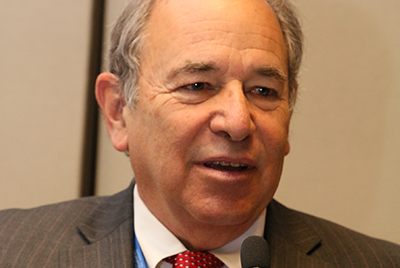Improving Child Mental Health Care Calls for ‘Big Solutions’

Mental disorders are the most expensive elements of child health care, yet opportunities for major improvement are possible with changes under way in the American health care system, said Gregory Fritz, M.D. (pictured above), director of the Division of Child and Adolescent Psychiatry at Brown University’s Warren Alpert School of Medicine in Providence, R.I.
“Adults like to romanticize childhood and don’t understand the profundity of childhood mental illness,” said Fritz at APA’s 2016 Annual Meeting in Atlanta today. The keys to caring for children lie in the early recognition and treatment of their symptoms and integrating care with pediatricians.
“Primary care is where the patients with mental disorders are,” said Fritz, president of the American Academy of Child and Adolescent Psychiatry. “Less stigma is attached to a primary care visit and there is a high level of trust, and providers know the family better.”
However, the barriers to better care for children amount to a “perfect negative system,” he said. Mental health and primary care practitioners may be on different insurance panels and use different electronic health record systems. DSM and ICD diagnostic categories do not reflect lower levels of severity that require attention if early diagnosis and intervention are to be effective.
“Situational problems, developmental questions, and behavioral problems also can be important but are not diagnosable, and thus are not reimbursed,” he said. The traditional model of paying only for face-to-face care has been another impediment for integrated or collaborative care models in which psychiatrists often serve in a consultative role.
The time has come, said Fritz, to bring together federal and state agencies, insurers, and professional organizations to provide the big solutions that child mental health care needs: end fee-for-service payments, end mental health carveouts, finally implement the 2008 parity law, and better educate both primary care and mental health clinicians about new models of practice.
(Image: David Hathcox)
|
|
|
|
|


